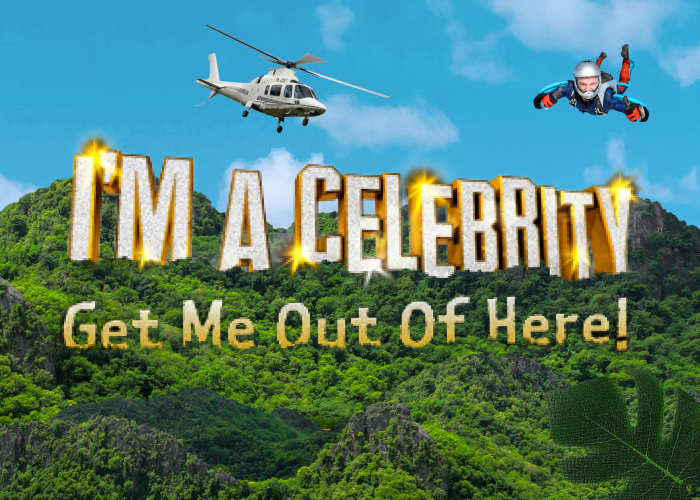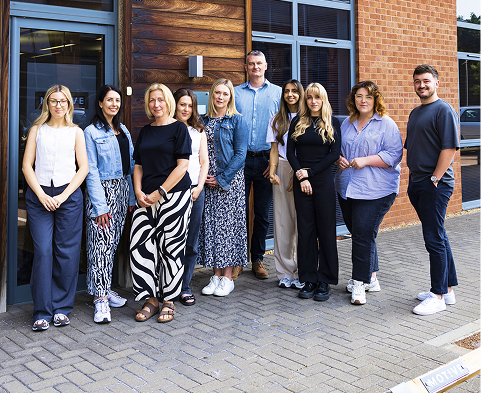As the age-old adage goes, “A picture tells a thousand words”. An image instantly tells a story that words alone sometimes can’t. A good set of images can turn a great pitch or concept into an outstanding one. And the power of photography in PR is all about putting your brand in front of the right people.
.jpg)
That’s not to say a well structured press release isn’t important. But there are times where even the most compelling words cannot compete with striking images. Journalists scroll through hundreds of pitches every week, and sometimes, the visual hook of a high-quality photograph could be what sets you apart from the rest of the crowd. After all, the average human attention span is only 8.25 seconds. And of all the multimedia elements that PR professionals provide to journalists, 72% say they use images in their content.
You only need to look at how social media platforms have evolved to see just how dominant imagery has become. Instagram and TikTok are obvious examples, but even platforms traditionally known for text – like LinkedIn, X (formerly Twitter), and Facebook – now prioritise visual content in their algorithms. LinkedIn’s own data suggests that posts with visuals can get two to three times more engagement than posts without. Facebook social posts with images get 53% more likes and 104% more comments than those without. And Tweets with images are nearly twice as likely to be retweeted.
Never underestimate the power of a good photograph when it comes to pitching to the press and getting your story or product placed. And never let it be an afterthought when it comes to planning a PR campaign.
In this blog we’ll explore how you can use photography effectively in PR. We’ll cover what makes a good press image and the different types you’ll need, to how to brief photographers and the common mistakes to avoid. Whether it’s a new product you’re trying to promote, a brand story you have to share, or building thought leadership, great photography can be the difference between getting noticed and getting overlooked.
What’s in this article:
- How images influence media coverage
- What makes a good press image?
- Different image types for different PR needs
- Working with photographers
- The technical bits
- Common mistakes to avoid
- Key takeaways
How images influence media coverage
Photos have long played a pivotal role in bringing news stories to life and engaging readers – 176 years in fact. The first photograph to be used in illustration of a newspaper story was taken on 25 June 1848. And while photojournalism has developed immensely over the years, the importance and impact that images have on media coverage has remained.
The New York Times notes, ‘Imagine a newspaper, magazine, billboard, news segment or online article that included no images. Not only do pictures help to enhance a story, they also tell a story all their own.’ And in today’s media landscape, a story's visual appeal can be just as important as its headline.
.jpg)
Take this example from the BBC. They ran a story on a boulder smashing through an Italian farm. Without pictures they say they wouldn’t have written it. But with the unique picture showcasing the aftermath, it becomes a story to talk about over at the water cooler, as they say.
It’s unlikely that you’ll ever need to pitch a press release or new product that features a boulder crashing through Italian hillsides (though never say never), but the sentiment remains the same for PR photography. If you have visuals that are unique to your story or product, they are more likely to catch a journalist's eye and make your pitch stand out.
It’s the same principle journalists apply every day – stories that look good get more attention. Strong imagery in PR doesn’t just support a story, it enhances its news value.
What makes a good press image?
A great press image can be the difference between your story or product landing coverage or getting lost amongst the hundreds of other pitches received that week by a journalist. Great images aren’t just visually appealing – they’re clear, relevant, and instantly tell the story you’re trying to share. Below are the key things to remember when it comes to images:
Clarity
Clarity is key. Journalists need images that are ready to publish, not something that’s going to need editing or colour correction, so you should always ensure any images you provide are high-resolution, well-lit, and in focus.
Relevance
It’s important that press images are relevant to the type of press release you are sending, and not just placed for decoration. If you’re launching a new product, you’ll need to include a clear image of the product. If your press release is announcing company updates, include images like professional headshots, behind-the-scenes shots, or event photos.
Authenticity
Journalists prefer original and authentic images rather than stock photos. Overly-staged and stock-style images can look generic, unnatural, and disconnected from your story. Instead, choose images that truly enhance your story, and make sure you are not violating copyright laws with the images you are sharing for publication.
Composition
Composition is the backbone of photography and can make or break a shot. Visual elements should be arranged in the frame in a way that creates a visually appealing and impactful image. And leaving space around the focal point is important for a good press image too, as it gives editors flexibility for cropping or adding headlines.
Brand consistency
You want to ensure elements such as colours or tones are consistent with your overall brand identity. A press image should feel recognisably you. Staying consistent across visual elements helps reinforce your brand personality and makes your coverage easily identifiable.
When all of these elements come together, they do more than just complement your story – they strengthen it.
Different image types for different PR needs
Not every press image is going to serve the same purpose, so it’s important to know the different image types for different PR needs. The right image can help a journalist to visualise your angle and ultimately decide whether your story earns coverage. Here’s how you can tailor images for different PR needs, with examples of the work we have done here at Motive with clients throughout the years:
Product PR
When it comes to product stories, journalists often request a white cut-out image that shows texture, colour or features. Images against a white background are essential for e-commerce or product roundups. Some journalists might also request lifestyle images too. Lifestyle images are able to illustrate a product in use. Having both types of images allows journalists to offer a choice to their editor or provides variety to their story.

People and founder shots
Through a mix of portraits, team photos, and in-action shots, people and founder images can be used to build brand trust – especially in founder-led or small business PR. It’s a chance to show people in your brand as approachable and authentic. Think natural smiles and real environments. Avoid staging images that don’t particularly depict something you would see in the workplace.
Corporate and thought leadership
These types of images are required for B2B and professional storytelling, whether it’s to announce new hires to a senior position or to share important company news. Professional headshots, event imagery, and behind-the-scenes photos can all support professional and thought leadership content. It’s also important to keep images consistent across your website, LinkedIn, and other media materials to reinforce professionalism.

Case studies and campaigns
Images used for case studies and campaigns should help bring results and stories to life. Using real customer stories is a great way to secure media coverage, and photos need to be of genuine people using or benefiting from your product or service, as this helps to humanise your brand and adds a layer of trust that polished product imagery alone can’t achieve.
Before-and-after images can be particularly powerful in this instance, as they can provide visual proof of transformation or impact. And when paired with environment shots capturing people in their real settings - such as home or workplace - they can make a story feel relatable.
.jpg)
Lifestyle and contextual imagery
This type of imagery is an important asset for consumer media. Lifestyle images help audiences picture themselves engaging with your brand. This could be anything from wearing your product to enjoying your service, depending on what industry your product is in. And unlike cut-out product shows, lifestyle images add context – they showcase how and where your products can fit into everyday life. The type of scenes that work best are candid and naturally-lit, and it’s good practice to have a mixture of close-up and wide shots too – this gives editors a range of options to choose from. You also need to ensure that shots aren’t too posed or overly commercial looking. The goal is to make the image feel like something you could envision being used in an editorial spread, not an advertisement.
.jpg)
Working with photographers
A good PR photo requires more than simply picking up a camera phone and taking a shot. It can be tempting to take a DIY approach to photography, especially when budgets are tight, but when it comes to PR, decent often isn’t enough. Using poor quality photos shot by a colleague, over-used stock photos, or non-professional selfies on social media profiles might be sending potential customers all the wrong signals. If you have a quality product, then it deserves quality photographs to represent it.
Using professional photographers brings expertise that goes far beyond owning good equipment. They understand all the elements such as the right composition, lighting and high resolution, meaning you’ll get high quality media-ready images. And if journalists are receiving professional shots that meet media-quality standards, it can only increase their confidence that your brand is credible and well-presented.
If you are hiring a professional photographer, then a strong brief is crucial for success. PR photographers know that PR photography is totally different to other types of photography. They know they aren’t there with a free rein, they’re there to ensure you as the client gets exactly what you set out to achieve. With that in mind, make sure you share your brand guidelines, tone of voice, and any existing press coverage that can help them understand how your brand is portrayed. And if there are any particular publications or styles of images that you’re targeting, provide examples so everyone is on the same page.
Don’t forget to plan ahead as well. Seasonal PR moments like Christmas, Valentine’s Day and Easter see journalists start planning their features months in advance, so it’s important to have timely imagery ready for when these events come around.
The technical bits
How you deliver your images can be just as important as what you deliver when it comes to PR photography. Journalists and editors will often prefer high-resolution JPEG images, ideally in a landscape format, as these are easier to crop or resize for print and digital layouts.
It’s often overlooked, but clear file naming can be hugely beneficial too. Journalists are busy people, if you’re sending over a bunch of images with file names like “10111-1499-12_1751 (1)”, it’s a waste of their time and could make you look unprofessional. Using descriptive names – including things like the subject, brand, and date – helps to keep things organised and can even help prevent unintentional duplication of photos. Concise captions and photographer credits can also help the journalist understand the context and ensure proper attribution.
You should avoid sending large attachments via email as well. Often they can get lost or blocked, and they might even be too large to send on some occasions. Tools like WeTransfer or Dropbox are your best friends for having to send large files to journalists. Not only do they protect image quality, but it makes it easier for journalists to access exactly what they need too.
Keeping things like file types, sizing and accessibility might seem minor, but it saves journalists time, helps improve media relations you have with them, and increases the likelihood your images get used, giving your PR efforts a professional edge.
Common mistakes to avoid
PR imagery can fall short if a few key pitfalls aren’t avoided. We’ve mentioned numerous mistakes to avoid throughout the blog so far, but this section rounds those up in the one place for you:
- Overly staged or artificial photos. You might want to create the “perfect” shot, but journalists prefer authenticity. Real people in real environments, showcasing natural expressions and interactions will appeal to journalists more.
- Technical issues. Low-resolution images, or providing portrait-orientated images only can reduce your chances of coverage. Journalists want high-resolution, media-ready images, while portrait allows less scope for edits and crops.
- Limited images. Only sending one image leaves journalists and editors without options and can restrict the versatility of your story.
- Representation. Forgetting diversity can limit the appeal of your images to a broader audience. The same models, same angles, and same settings can get repetitive, so it’s important to mix things up.
- Poor organisation. Missing file names, no captions, and pictures sent as email attachments can frustrate journalists, and make your content harder to use. A bit of organisation helps journalists and editors and increases your chance of coverage.
- DIY photography. Good products deserve good images. And a professional photographer will bring far more expertise than using a colleague’s camera phone.
By avoiding these common PR photography mistakes, you can ensure that your images are not only visually appealing, but also journalist-friendly, increasing your credibility and chances of media coverage.
Key takeaways
- Visuals are essential in PR. Striking, high-quality images can make your pitch stand out and increase your chances of media coverage.
- Clarity, relevance, and authenticity matter. Journalists prefer high-resolution, original images that clearly support your story rather than generic or overly staged photos.
- Different PR needs require different image types. From product shots to lifestyle and founder images, tailor your visuals to the story you’re telling.
- Professional photographers and proper briefs add value. Experienced photographers ensure media-ready images, and clear briefs help capture your brand accurately.
- Organise and deliver images correctly. High-resolution files, descriptive names, captions, and accessible delivery methods save journalists time and improve your chances of coverage.
Looking for more advice on how to create a PR campaign that works? Get in touch today.



.jpg)

.jpg)
.jpg)
.jpg)



